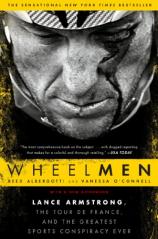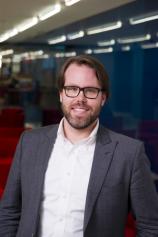Excerpt
Excerpt
Wheelmen: Lance Armstrong, the Tour de France, and the Greatest Sports Conspiracy Ever

Introduction
Not long ago, the world witnessed the dramatic downfall of one of America’s most celebrated sports heroes: Lance Armstrong.
Millions of viewers were riveted by Lance’s confessional interview with Oprah Winfrey in early 2013. Although what he said during that interview was by no means the whole truth, Lance did talk candidly to Oprah about certain subjects. For the first time, he publicly admitted to doping and using blood transfusions for his seven Tour de France victories. He also spoke touchingly about having to ask his thirteen-year-old son, Luke, the oldest of his five children, to stop defending him and telling people that what they were saying about his father wasn’t true—because, unfortunately, it was.
But his confession raised more questions than it answered, in part because he failed to put any of it in context, to talk about who had helped him dope, where the drugs came from, and how he managed to cover up his activities for so long, despite the hundreds of drug tests he underwent and the vigorous investigations of journalists who did not believe any of his denials.
This book is an attempt to fill in the gaps he left and tell a much more complete, objective, and nuanced story. It isn’t just about Armstrong as an individual, an athlete, or a cancer survivor. It’s not solely about doping and cheating—or merely about sports. We view this as a business story—a story about a business that, at least in its participants’ eyes, was too big to fail. We will take you behind the scenes, where you will meet many of the cyclists who rode for and against Armstrong, the bureaucrats and businessmen, the sponsors and lawyers who surrounded him during the course of his long career, and finally the investigators who brought him down.
From the clinics and laboratories of shadowy doctors in Spain to the vertiginous mountain roads of the Tour de France, from secret scenes of doping and blood transfusions in hotel rooms and team buses to extravagant victory celebrations at the Musée d’Orsay in Paris, from Armstrong’s remarkable comeback from a near-fatal testicular cancer to his final fall from grace, what we have provided here is the first in-depth account of what went into the making—and unmaking—of an American icon. It is also a picture of a multinational conspiracy that yielded its many participants hundreds of millions of dollars over the course of a twenty-four-year sweep of time, as it played out in locations as diverse as Austin, Texas; Washington, DC; Greenwich, Connecticut; Idyllwild, California; Nice, France; St. Moritz, Switzerland; and Girona, Spain.
For most of the past century, Europeans had dominated the sport of cycling, and became its most avid fans. But in Europe cycling was very much a working-class sport. Professional cyclists came from small farm towns or poor urban areas, and their pay reflected it. As recently as the 1970s and 1980s, some of the greatest names in the sport, like Frenchman Bernard Hinault and Belgian Eddy Merckx, made money that would look laughable even to second-tier professionals by the mid-2000s.
For decades few Americans paid any attention to professional cycling at all. But once that began to change, it would be the Americans—the newcomers to the sport—who would change its economics forever, commanding the richest paychecks the sport had ever seen. Cycling’s first million-dollar salary went, in 1991, to Greg LeMond, an American who won the Tour de France three times after moving to France at age nineteen. Next came Armstrong, riding on teams with big American sponsors—including the US Postal Service and corporations such as television’s Discovery Channel—whose lavish funding helped drive his base pay to $4.5 million and his bonuses to $10 million by 2004. Armstrong’s pay was only a tiny fraction of his overall income because of the hugely lucrative endorsement deals he signed, worth about $16.5 million that year alone.
Viewing Armstrong’s rise and fall through the prism of business, we see him as both tool and beneficiary of the ambitions of a small group of Americans who wanted the United States to become a major player in what had been a mainly European sport. These men aimed not just to dominate the sport but to commercialize it and make it into a money machine. Armstrong was perfect for their goals—an extraordinary combination of athletic talent, drive, ambition, and ruthlessness. And once he began winning, he became the chairman and CEO of the business of making himself rich and famous. Aided by a vast, interconnected network of supporters, he kept tight control of his image, presenting himself through the media and through his sponsorships as an all-American hero—sports prodigy, cancer survivor who came back from near death to win his first Tour de France, founder of a multimillion-dollar charity that offered hope, help, and support to thousands of people suffering from cancer.
Yet Armstrong’s public persona was very different from his private one. The great athlete turned cancer activist and secular saint had a dark side that very few people outside of his inner circle knew about. While he portrays himself as a poor underdog, he came from a reasonably comfortable middle-class home in Plano, Texas, and also was indulged and self-absorbed and arrogant from boyhood. Although Lance seemed to be always searching for a father figure, he struggled to maintain lasting relationships with many of his mentors. He surrounded himself with friends, girlfriends, and business partners, and needed and craved their attention, reassurances, and support. But he had a habit of exploiting those who cared about him.
This book arose from the more than one hundred interviews we conducted and the many articles we wrote in The Wall Street Journal about Lance and his take-no-prisoners war with former teammates, federal investigators, and anti-doping officials over accusations that he had doped to win the Tour de France. Our work for the Journal was focused on offering the first detailed accounts of the mechanics and culture of the US Postal Service team’s doping program and, as such, it ended up playing a role in the events that culminated in his downfall.
The tipping point for Armstrong and his circle came in early 2010, when his former US Postal Service teammate and protégé Floyd Landis sent explosive e-mails to a small handful of men in the top ranks of professional cycling. In these e-mails, Landis admitted to using performance-enhancing drugs and blood transfusions during his years racing alongside Lance, and accused many of his former Postal teammates of taking part in doping as well. Describing
Lance as the ringleader of these doping practices, Landis was saying what a few people in the press had suspected for years, but no one had been able to prove. For a month, Landis’s e-mails remained a closely guarded secret. Federal agents who had learned of their contents and were looking into whether any crimes had been committed had instructed Landis not to go public with his allegations. Through a source close to US cycling officials, Reed—working with Vanessa—discovered the existence of the e-mails, was able to obtain them, verify their authenticity, and publish what turned out to be an exclusive international scoop, the first of many we had during the years we continued to cover the story.
To interview Landis, Reed spent two weeks in a remote town in Southern California where Landis was living far from the public eye, in a cabin with scenic views of a pine-forested mountainside—and a noticeable array of discarded junk littering the property. It took days for him to persuade Landis to tell his full story—and the cyclist did so despite pressure from many friends and former teammates who beseeched him to remain quiet. Several months later, in August 2010, we broke the news that Landis had filed a whistleblower lawsuit under the federal False Claims Act, alleging that Lance’s team had defrauded the US Postal Service, which had spent more than $30 million to sponsor the team. During the course of our investigative work for the Journal, we were able to interview at length many of the major figures involved in the story as well as numerous minor ones. We came to know every key player, some of them quite well. But no one, of course, was as mesmerizing as Lance. Lance Armstrong agreed to speak to us several times during the course of our reporting on the investigations against him, although he only very rarely allowed us to quote him or even to attribute what he told us to an anonymous source. The first time came as a surprise. On an August afternoon in 2010, Vanessa had flown to Austin, Texas, to meet with Lance’s lawyer, Tim Herman, at Trio, the restaurant at the Four Seasons Hotel. A few minutes after their lunch began, Lance strolled in and, with his ex-wife seated at a table nearby, joined in a lengthy discussion.
Even though our conversations with him were always on his terms, and carefully designed to influence our opinion of him, they gave us more of an insight into him than he might have realized. As journalists, we found Lance to be an intriguing mixture of open and withholding, controlling and seemingly vulnerable. He reads extensively, including everything written about him, and he likes to get to know some of the writers who are reporting on him. He knows how to turn on the charm when he wants to, but when he’s angry about something, he can go negative and rip into people with blistering personal attacks, as he did several times with us.
Thanks to these conversations, as well as interviews conducted with people ranging from his closest friends to his bitterest enemies, this book will allow you to see Lance up close—from his turbulent teenage years to his ascent to the top of his sport, his battle with cancer, and the depths of his disgrace. You will find out what motivated him to take extreme risks and to chase seemingly impossible goals; what fueled his persistent lying and bullying, his contempt for others, and his vendettas against those who spoke the truth.
While Lance Armstrong is its central character, you will also get to know Travis Tygart, a man we’ve come to see as the idealistic David to Lance’s seemingly unconquerable Goliath. Tygart knew the drastically underfunded US Anti-Doping Agency lacked the resources and the subpoena power he would need to build an airtight case. But after federal prosecutors dropped their criminal investigation without bringing charges, Tygart felt he had no other choice than to carry the weight of challenging Lance. He went into battle armed with what might have seemed only a slingshot compared to Lance and his team of high-paid, high-powered lawyers and publicists, but in the end that slingshot proved very powerful. The story of how this all came to pass is what you will read in the following pages.
Reprinted by arrangement with GOTHAM BOOKS, a member of Penguin Group (USA) LLC, A Penguin Random House Company. Copyright © REED ALBERGOTTI AND VANESSA O’CONNELL, 2013.
Wheelmen: Lance Armstrong, the Tour de France, and the Greatest Sports Conspiracy Ever
- Genres: Nonfiction, Sports
- paperback: 416 pages
- Publisher: Gotham
- ISBN-10: 1592408885
- ISBN-13: 9781592408887




